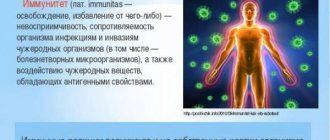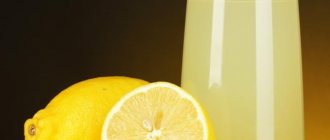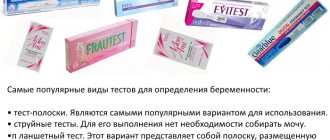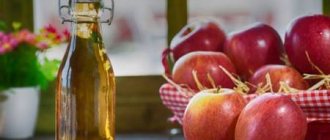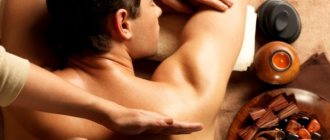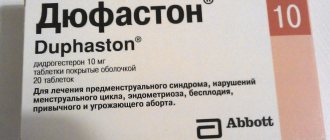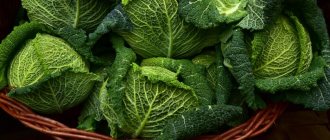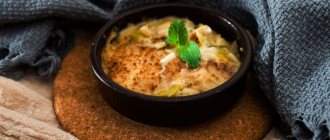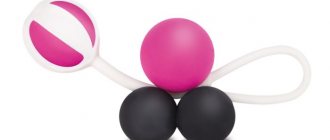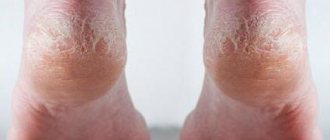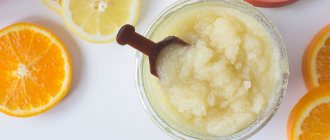When it comes to increasing the immunity of children of different ages and making their bodies more resistant to various diseases, all imaginable and inconceivable techniques are used. One of them is the use of folk remedies. One of the frequently used folk remedies is echinacea for immunity in children. In principle, it is useful to everyone without exception, but children also like it and, most importantly, it has a very positive effect on them.
Composition of Echinacea
Let's look at what this herb actually contains and how the components help increase immunity in children.
- Inulin . The substance helps increase the number of white blood cells - leukocytes - in the blood. Of course, this amount will not go beyond the norm. However, if there are really few leukocytes, then inulin will help the body better fight infections and viruses.
- Vitamins and minerals . “The periodic table” for a child is simply a godsend for his health. A growing body needs everything to help it grow and get stronger. Iron, magnesium, aluminum, manganese, vitamins A, C and E - this entire complex is simply irreplaceable so that the child’s body can better resist various pathogenic microorganisms.
- Polysaccharides . Another class of substances that helps strengthen children's ability to resist influenza, colds, acute respiratory infections, ARVI and other similar and even more severe diseases.
- Another component that makes Echinacea tincture for children’s immunity so valuable is essential oils . They have a complex effect on the body, including protecting it from various harmful external influences.
Now that you know the composition of Echinacea, it becomes clear why this herb is so in demand when it comes to strengthening the child’s body’s ability to resist colds. The complete absence of harmful substances and such an abundance of useful compounds, components and chemical elements makes this herb simply ideal. Of course, it has its contraindications, which we will discuss below, but echinacea is an indispensable remedy for children’s immunity.
What kind of plant is Echinacea?
The medicinal herb Echinacea is a perennial plant. For centuries, the medicinal properties of echinacea have been used by the Indians of North America, the birthplace of this medicinal plant. In Europe, it has been used for medicinal purposes and to enhance immunity for 150 years, and in Russia it is cultivated mainly in the Krasnodar region. For medicinal raw materials, grass collected during flowering and roots dug up in the fall are used. Echinacea contains:
- vitamins;
- phenylpropanoids;
- minerals - selenium, zinc and magnesium;
- polysaccharides;
- alkylamides.
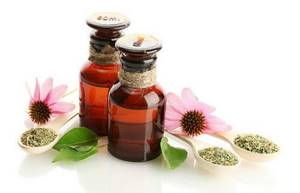
The phenylpropanoid component, chicoric acid, is responsible for the immunostimulating and antiviral properties of the herb. Alkylamides have an anti-inflammatory effect. Polysaccharides have an immunomodulatory effect on the body.
Types of Echinacea
There are several types of the medicinal plant Echinacea, but they differ only in color and appearance. The medicinal properties of all types of this herb are the same.
- Echinacea is strange - yellow in color, used in cosmetology and medicine to increase immunity.
- Purple echinacea - used more often than other types of this plant for immunity. It is distinguished by the soft pinkish color of the petals and a pronounced core with yellow dots.
- Pale and narrow-leaved echinacea is used in folk medicine for the prevention of diseases.
Purple echinacea is most often used in medicine. Extracts, juices, tinctures and tablets are obtained from medicinal herbs. When cultivating, they also prefer this unpretentious type of echinacea.
Instructions for use
When it comes to strengthening the immune system, it is important not to “go too far,” in other words, not to exaggerate the dosage and duration of use of any medicine or folk remedy. Echinacea is no exception in this case, and the instructions for use must be followed very carefully to achieve the desired effect.
So, echinacea for children’s immunity: how to take such a medicine to get an amazing effect and, at the same time, not to harm a child’s growing body? The answer is simple: you need to perfectly adhere to the recommendations for use.
Echinacea tincture
If we are talking about echinacea tincture, it must be taken 3 times a day, 5 drops per dose. Since it contains essential oils and many vitamins, it is best to take echinacea immediately before meals.
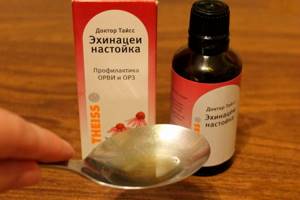
Yes, one more nuance: these 5 drops need to be diluted in a small amount of warm boiled water and under no circumstances
Do not give this medicine to a child under 12 years of age.
Important: purchase echinacea tincture at the pharmacy. This way you can be sure that the medicine is safe.
Echinacea decoction
Echinacea can also be presented in the form of a decoction. You can prepare it yourself by purchasing dried herb at the pharmacy - the raw material from which echinacea decoction is prepared for the immunity of children. This folk remedy can be used by all children, but it is most effective in children aged from one to three years.
Measure 10 grams of raw materials and place in a ladle and fill with 500 milliliters of water. Place over medium heat and bring to a boil. As soon as the mixture boils, remove it from the stove and cover with a towel. The echinacea decoction should stand in a warm place for at least 2 hours.
Question: how to use it? Answer: three times a day, 50 ml before meals. If we are talking about a schoolchild, the dosage can be increased to 100 ml.
Attention: there is no need to prepare a decoction “just in case”; it is better to brew it immediately before use, since it is advisable to use it warm.
Echinacea tea
If there is no desire or opportunity to deal with tincture, and you are simply too lazy to prepare a decoction, why not look towards bagged tea? It is also sold in every pharmacy and has a very good effect on children’s immunity - because the composition does not change: echinacea is still present, which has an excellent effect on the child’s body.
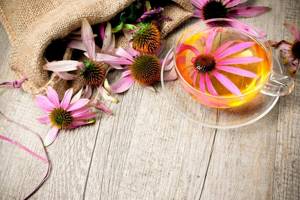
The instructions for use are extremely simple: pour boiling water over one tea bag, wait 15 minutes and... an amazing remedy for strengthening the child’s body’s resistance to infections is ready for use.
Just like the previous remedies, it is recommended to drink 50 ml of Echinacea tea before meals. After the child has been drinking tea for about a month, it is necessary to take a break.
Syrup
A unique product for kids! The sweet taste is very attractive to them, so young children are happy to strengthen their immunity through this syrup. It can be given to the child one teaspoon 3 times a day. If your child absolutely does not like drinking this syrup in its pure form, add it to his tea, for example, or compote.
For children over 12 years of age, you can safely increase the dosage to 3 teaspoons per dose.
Drops
Tincture and drops are not the same thing. More precisely, the composition is the same, but the release form is different and, accordingly, different methods of application.
The instructions are very simple: dilute 5-10 drops in a small amount of water and give it to the child to drink. You need to take Echinacea drops 3 times a day, the course duration is 30 days.
Pills
For children starting from 4 years old, there is also echinacea for immunity in tablets. Instructions for children will be given below, because if you do not follow them, it is likely to cause harm to your body instead of health.
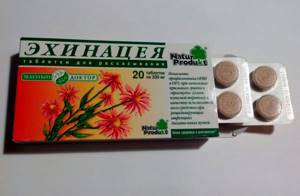
And the instructions are, in fact, very simple: let the child eat one tablet 2 times a day. And this will be quite enough for immunity.
Indications for use
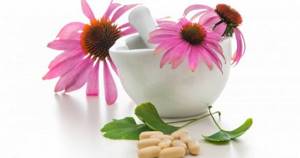
When should you take Echinacea? Let's consider some factors that indicate a decrease in immunity, and it's time to take care of your health:
- you often get colds;
- boils appear on the body;
- the recovery process is difficult and slow;
- herpes often appears on the lips;
- the need to strengthen the immune system;
- appearance of weakness;
- insect bites, burns (externally);
- poor sleep, irritation;
- female diseases, including thrush;
- drink alcohol, smoke;
- treatment of staphylococcus, streptococcus, E. coli;
- are taking antibiotics;
- ear infections;
- temperature increase for no apparent reason up to 37.2 degrees;
- bladder and liver diseases;
- live in an environmental disaster zone.
Contraindications
Echinacea is not always suitable for children's immunity. There is a whole list of diseases that are absolute contraindications for taking this folk remedy.
- Autoimmune diseases.
- Tuberculosis.
- HIV or AIDS.
- Leukemia.
- Individual intolerance.
Check out this list and if you suspect any of the above in your baby, do not give him Echinacea in any form without first consulting a doctor.
By the way, if your child is not even 12 months old, Echinacea is also contraindicated for him.
Reviews
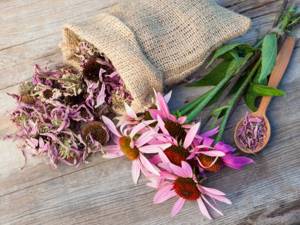
Increasingly, experts recommend the use of echinacea-based drugs as an immunomodulator during epidemics of colds, after mental or physical fatigue, after a course of radiation therapy, or taking antibiotics. However, when using the echinacea herb for immunity, they recommend strictly following the instructions for use. What do patients themselves think about the effectiveness of such treatment? Many of them note that using echinacea to prevent colds really has a positive effect. It is noted that the incidence of diseases has decreased significantly. In addition, one cannot but rejoice at the very affordable price. No side effects were found while taking the drugs.
Many people know that after an infection, the body needs time to restore the imbalance in the immune system. For this reason, many patients use immunomodulators, the effect of which has actually been proven and works great, as consumers say. According to reviews, echinacea even helps get rid of chronic herpes. You just need to drink the whole course.
Raising children's immunity with Echinacea (Video)
Related Articles
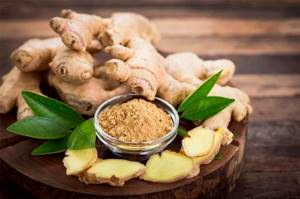
Ginger for children for immunity

How to treat lymph nodes at home: effective drugs and folk remedies
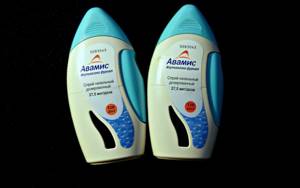
Avamys for adenoids in children: instructions for use, analogues and reviews
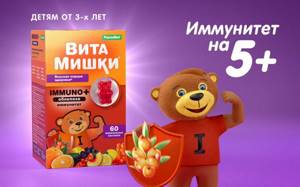
Vitamins for immunity for children: a review of drugs and natural remedies
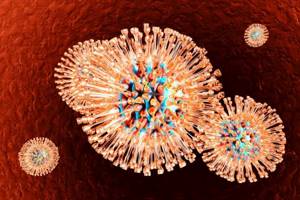
Herpes on the tonsils: photos of symptoms, routes of transmission, treatment methods
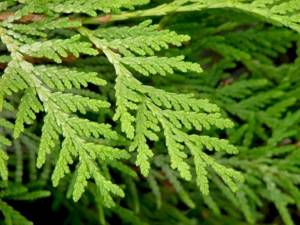
How to use thuja oil for adenoids in children: instructions for use and reviews
Benefits and harms for the child’s body
For children, echinacea tincture is prescribed primarily to strengthen the immune system. It is made from the rhizomes of the plant. They contain the following beneficial substances:
- Phenylpropanoids (chicoric, caffeic and chlorogenic acids). Stimulate the synthesis of lymphocytes - specific blood cells that protect the body from viral infections.
- Polysaccharides. They enhance the immune response to foreign proteins, which prevents the development of diseases.
- Alkylamides. Inhibits inflammatory processes in the body.
Other active ingredients are obtained from the inflorescences:
- Flavonoids (nicotiflorin and rutin). They increase the density of capillary walls, prevent blood thickening and thrombus formation. Inhibits inflammatory processes and neutralizes the effects of solar radiation.
- Essential oils. Accelerate recovery from respiratory infections. Inhibits inflammation in tissues.
It is recommended to give Echinacea tincture to children with an increased incidence of ARVI. It stimulates the immune system and accelerates recovery by activating the production of interferons - proteins that inhibit the proliferation of viruses.
But if the recommended dosages or individual sensitivity are exceeded, the child may experience a deterioration in well-being. It is caused by overstimulation of the immune system.
Watch a video about the medicinal properties of the plant:
